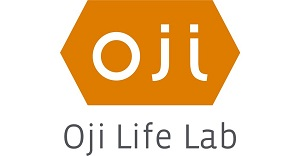ATD Blog
Assessing Emotional Intelligence Training
Wed Jul 20 2022

As a longtime L&D professional just like you, I sympathize with your situation.
Chances are your senior management is looking to you for help equipping staff with new skills to keep your company competitive and resilient. And based on post-pandemic research from McKinsey, chances are your task includes implementing soft skills training—one of the most popular L&D categories in the new era of remote and hybrid work.
That puts you in a doubly difficult position. Finding any program that effectively teaches the foundation of soft skills—emotional intelligence (EI)—isn’t easy. Complicating matters further is the fact that there just aren’t many solid frameworks for evaluating business training programs, particularly one that teaches a skill set as hard to quantify as emotional intelligence.
Let’s briefly review the flaws in most methods used to assess soft skills training. Then I’ll offer a few suggestions for evaluating whether the EI learning program you choose is actually working.
Where Training Assessments Go Wrong
They ask the wrong questions.
Many post-training evaluation surveys ask attendees questions such as, “Was the presenter organized?” and “Did you find the length of the training appropriate?” These details are nice to know—but they fail to assess whether the course achieved its mission.
The objective of an assessment should be to ascertain whether the training is aligned to a specific business outcome and to identify how well it achieves that objective. After all, if you can’t demonstrate that your training is helping your company reach a specific goal (retention, engagement, revenue, or whatever), why would you expect the resources to continue it?
Ensure the material is tied directly to concrete, quantifiable objectives. For instance, if you’re looking to boost your sales revenue from $300M to $500M in the next 18 months, you might want to boost communication and teamwork among your product teams, help your reps increase their listening and persuasion skills, or similar objectives.
They rely on self-reporting.
Most post-training assessments ask attendees to rate how they’ve improved at the skills taught in the training. Self-assessments are problematic; we’re notoriously poor judges of our own strengths and weaknesses. For example, most drivers (88 percent in one study) believe that they are above average in their driving skills, while statistics tell us only half can be average or above. Feedback from others regarding our EI is a truer indicator of current skill level than we achieve through self-assessment.
Strategies for Assessing Emotional Intelligence Training
If traditional assessment methodologies fall short in evaluating a training program—and particularly for EI training—then how do you assess it? You need to get strategic.
Establish a baseline.
Before you can measure whether an EI training program has achieved its objective, you’ll need to know the current EI level of your organization. From this baseline, you can judge how well your training intervention elevated employees’ EI skills and whether the program achieved the organizational objective.
But this is tricky. You can’t just ask employees to rate their EI—remember, almost all of us think our driving skills are above average. What you can do, though, is mine the wealth of information already compiled across your company. A few examples of where to look:
Review your exit interviews. How your resigning or terminated employees felt about their jobs, co-workers, and managers when they left can tell you a lot about the EI levels of your organization. Look for trends in the notes of those interviews. Are employees repeatedly describing feeling overlooked and underappreciated? That signals a low-EI organization. On the other hand, if even employees being let go speak highly of the company and their managers, that’s an indication you’re at a high-EI company.
Review your employee engagement surveys. Your engagement surveys won’t answer the EI question head-on, but they will contain useful clues. Reports of low employee-engagement levels suggest they’re working with low-EI managers and co-workers. After all, how our colleagues make us feel at work strongly affects how engaged we feel with our jobs.
Review your customer satisfaction scores, another indirect way to get a picture of your company’s EI levels. If your average customer satisfaction ratings are low, that signals your employees exhibit poor EI skills when dealing with customers.
This isn’t an exhaustive list for establishing that EI baseline. You can find plenty of additional data sources that offer clues about your company’s EI levels. A high rate of sales prospects agreeing to a second call or signing up for your product signals that your sales team has high EI. Be creative in tracking down these clues and look for data points that measure connections between people.
Make sure your training is built around specific business goals.
Once you’ve compiled sufficient evidence to establish a baseline of your organization’s EI today and made sure your training program is designed to address specific gaps, roll out the training to your staff, and then review those metrics and success rates again in the near future. While EI training can be difficult to quantify in terms of monetary value, research shows a clear financial benefit—as much as a 1,484 percent return on investment.
To get to that level of ROI, you’ll need to measure at intervals and determine if future training interventions may be needed. Successful EI training that moves the needle on important business metrics doesn’t happen overnight. Play the long game by associating data with behavioral improvements and let that inform your training design and deployment strategies moving forward. And remember, you aren’t a fair judge of yourself, so ask your next passenger, “How’s my driving?”
For a practical approach to implementing EI learning within your organization, watch our recent webinar with ATD or schedule a time to speak with an Oji Emotions Specialist today.
You've Reached ATD Member-only Content
Become an ATD member to continue
Already a member?Sign In

